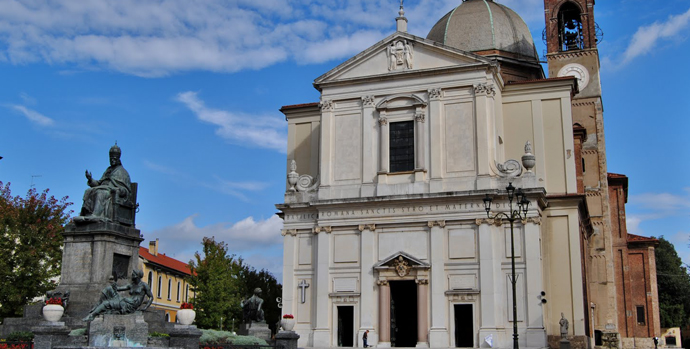

News and Offers:


WELCOME TO DESIO
The route of the Roman road between Mediolanum and Comum, then taken over by old Valassina, Desio is important in the high Milanese since 649, when Bishop John Bono founded the church of Santi Siro and Maternal. Theatre in 1277, the decisive battle between the Napo and Ottone Visconti Tower, grown since the fourteenth century, was in the middle of that century by Bernabo Visconti castle integrated in the walls. The site of the fort was built in the eighteenth century Villa Cusani seconds, then Tittoni Traversi, project neoclassical architect Giuseppe Piermarini revised mid-nineteenth century by Pelagio Palagi. Among the various other residences of the nobility of Milan are also considerable Villa Aliprandi and, in the hamlet of St. Joseph, Villa Ferrario, original seventeenth century, with an oratory contemporary to the first building. Direct heir of the seventh-century church is the parish desiana, whose current building was started in 1651 and finished more than a century later.
Basilica of Saints Siro and Maternal
The interior of the church was thought
the second century stylistic models and hosts several altars
of great value with baroque decorations.
Remarkable frescoes reported on canvas depicting Jesus'
entry into Jerusalem (1861) and Jesus and children (1858),
painted by Mauro Conconi. The church also as an altarpiece,
the Madonna and Child with Saints, painted in 1480 by
Stefano De Faithful, the altarpiece of the thirteenth
century Oratory of S. Peter and the relics of San Siro. On
the side of the Basilica stands the Gothic tower, built
probably in the early fifteenth century.
On the square you can see the bronze monument to Pius XI, by
the sculptor Albert Dressler.
Address:
Via Conciliazione, 2 –20033- Desio
Times:
7.30-12.30 14.30-18.30
Villa Cusani Tittoni Traversi
At the end of Via Lampugnani is Cusani
Tittoni Villa Traversi, built in the eighteenth century by
the architect Giuseppe Piermarini. Just to Piermarini, in
collaboration with the Villoresi, we owe the creation of the
magnificent park.
Around 1840, the complex was greatly expanded and redesigned
by the Bolognese Pelagio Palagi, which, in addition to
treating the architectural parts, also designed the
decorative interiors. The Palagi worked on the house between
1817 and 1846, raising a building in the park in the form of
a Gothic tower and expanding the building. This building
stands on the complex of buildings that were formerly a
Franciscan convent. The old rooms are now occupied by a
splendid mineralogical collection, which is definitely a
level of quality among the best in Europe.
The ground floor has rooms decorated with elements from
different styles: neoclassical, Gothic, Baroque and Arabic.
Very interesting is the chapel dedicated to St. Francis,
built in the eighteenth century, which has a stucco
ornaments, and pictorial parts made by Gerli brothers.
Behind the villa opens the beautiful Municipal Park, the
remains of the gardens that once adorned this holiday
residence.
For events and visits to the villa
Tel: +39 0362.392240
• Welcome to Desio